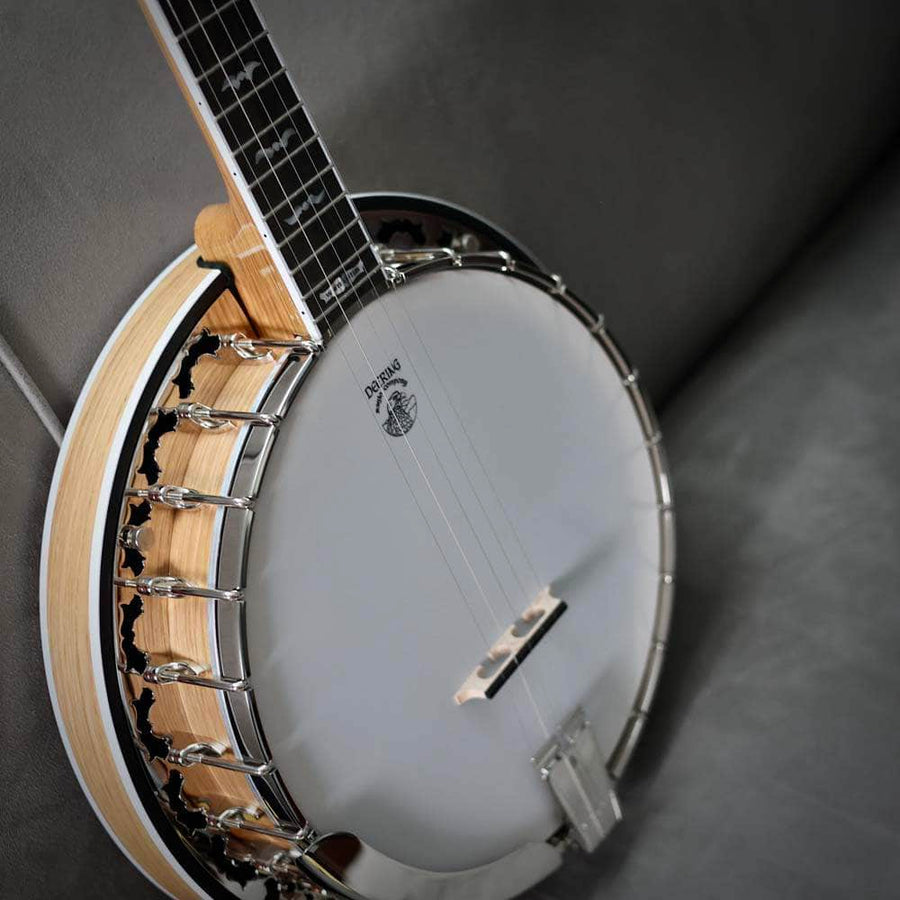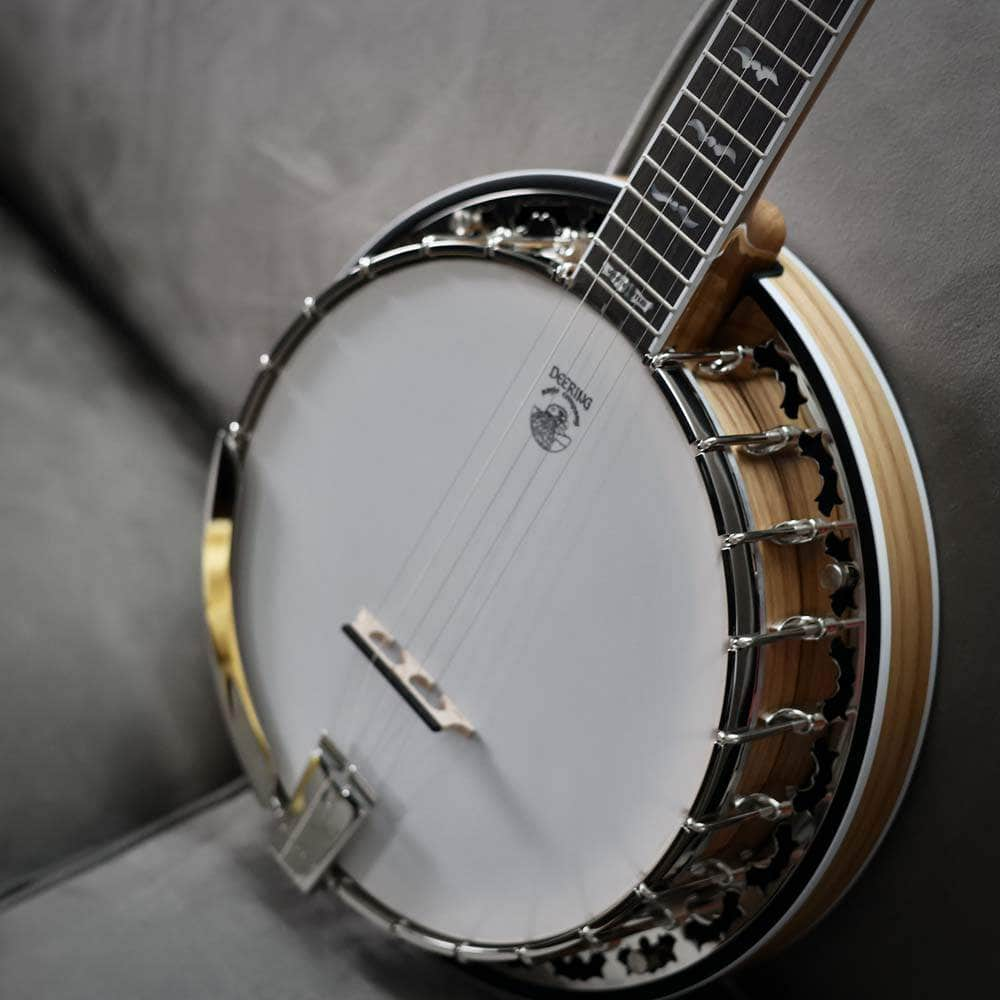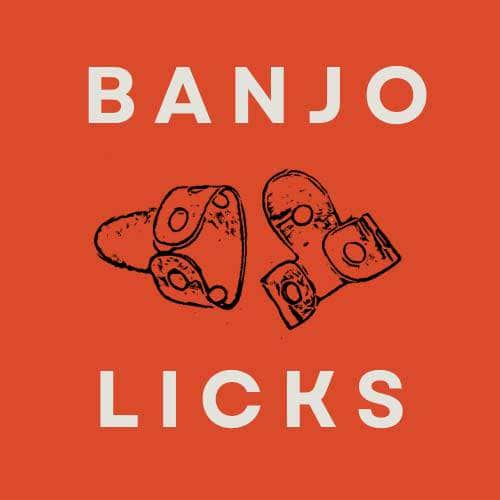How To Tune a Banjo
Welcome to our comprehensive guide on how to tune a banjo! Whether you're a seasoned picker or just starting out on your banjo journey, achieving the perfect harmony of those distinctive strings is a crucial step to unlocking the full potential of this unique instrument. On this page, you'll discover a wealth of information about popular banjo tunings, catering to all types of banjos. Whether you prefer the crisp tones of bluegrass or the mellow warmth of clawhammer, you're in the right place to master the art of tuning your banjo. Let's dive in and harmonize those strings!.
5-String Banjo
G, D, G, B, D
This is referred to as "Open G" Tuning because the banjo is tuned to an open G chord, meaning that if you strum the banjo without fingering any of the strings on the neck you will be playing a G chord.
Open G tuning is the most standard 5-string banjo tuning is.
G, C, G, C, D
Often used in Old Time music, this banjo tuning is referred to as "Double C" Tuning because the banjo has two C strings. Learn how to easily tune your banjo to Double C tuning here.
G, C, G, B, D
This banjo tuning is referred to as "C" Tuning. It can also be referred to as "Drop C" Tuning because coming from the open G tuning, the D string on the 4th string is dropped down to a C.
F#, D, F#, A, D
This is referred to as "D" Tuning. Earl Scruggs used this tuning on such songs as "Reuben". You can also tune the 5th string to an "A" instead of a "F#" and still be in "D" tuning. If you strum the banjo without fretting any strings in this tuning you will be playing a D chord.
G, D, G, C, D
This is referred to as "G Modal" Tuning. This is a very popular tuning for old time tunes such as Shady Grove, Little Sadie, and many others. It is also sometimes called “Sawmill Tuning” or “Mountain Minor Tuning.” This is very close to standard G tuning but the second string is tuned up to a C note. This eliminates the third of the G chord and produces a G sus 4 chord. By eliminating the third of the chord, you cannot tell if it is a major or minor chord and gives it a modal sound.
F, D, G, C, D
This tuning is very close to "G Modal" tuning but has the 5th string tuned down to F. This is called F tuning and is great for playing tunes in the key of F. This tuning has become popular in the old time / clawhammer banjo world in the past 10 years, popularized by players such as Riley Baugus, Adam Hurt, and Chris Coole.
Buy 5-String Banjo Strings Here
19-Fret or 17-Fret Tenor Banjo Tuning
C, G, D, A
The most standard tenor banjo tuning. This is referred to as "Standard Tenor Tuning" for obvious reasons. This tuning is the intervals of fifths and is exactly the same as viola or mandola.
G, D, A, E
Referred to as "Irish Tenor Tuning". This tuning is also in fifths but is lower in pitch than the standard tenor tuning. This tuning is like a violin or mandolin, only one octave lower.
D, G, B, E
This tuning is the same as the top four strings of a guitar and is often referred to as "Chicago Tuning". This makes it very easy for guitarists to pick up a 4-string banjo and start playing.
Plectrum Banjo Tuning
C, G, B, D
The most standard plectrum banjo tuning. This is very close to the standard 5-string tuning (without the 5-string), but the 4th string is dropped down to C.
D, G, B, E
This tuning is the same as the top four strings of a guitar and is often referred to as "Chicago Tuning". This makes it very easy for guitarists to pick up a 4-string banjo and start playing.
Buy Plectrum Banjo Strings Here
5-String Longneck Banjo Tuning
E, B, E, G#, B
This is open E tuning. Really it is the same as open G tuning, just 3 steps lower in pitch.
6-String Banjo Tuning
E, A, D, G, B, E
This tuning is exactly the same as a guitar.
Buy 6-String Banjo Strings Here











Leave a comment